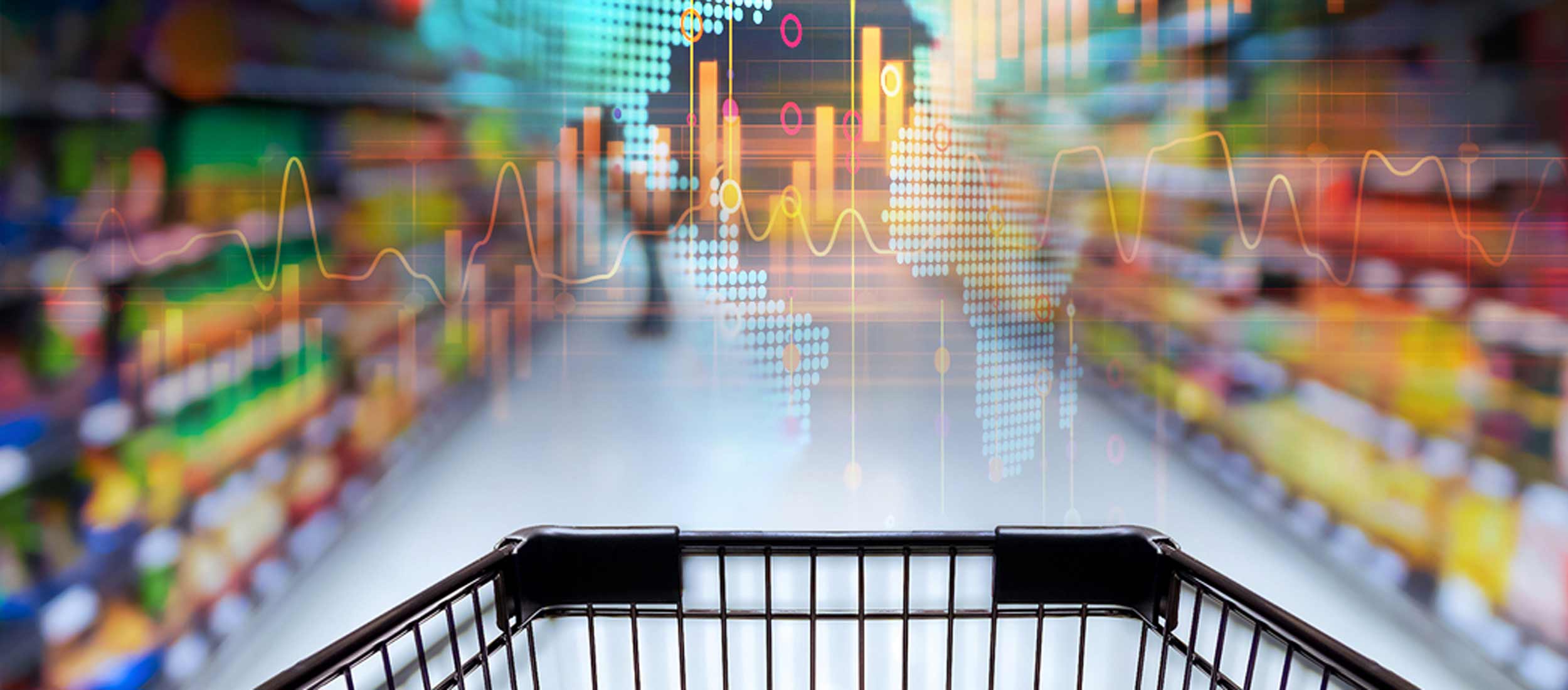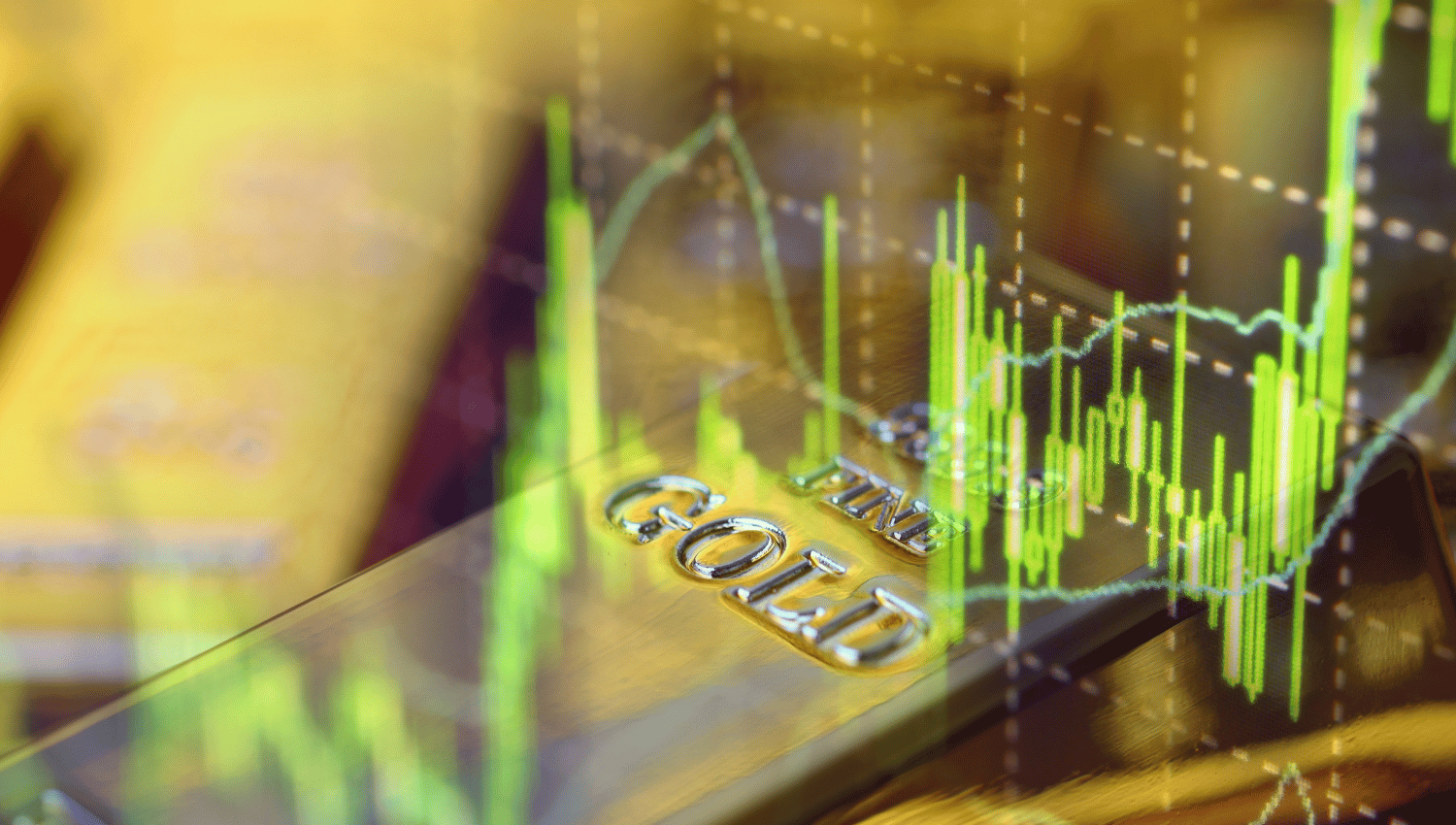Today’s Snapshot:
• On April 25, U.S. consumer confidence fell to a nine-month low in April, indicating a recession shortly, according to a survey by The Conference Board.
• On April 26, gold prices remained stable due to recessionary fears while investors awaited U.S. economic data to clarify the Federal Reserve’s rate-hike trajectory.
• Spot gold remained at $1,997.40 per ounce, while U.S. gold futures rose 0.2% to $2,008.60.
• Investors hesitated to sell their gold holdings due to weak U.S. economic data. Market analyst Matt Simpson suggests that trading conditions will continue choppy, dips towards $1,950, and could be bought up quickly by buyers looking to cash in on the lower prices.
• The dollar index has eased, making gold less expensive for overseas buyers.
• The personal consumption expenditures report, due on Friday, will have the most significant impact on gold prices, according to Simpson.
• The Fed is expected to increase interest rates by 25 basis points, which could reduce gold’s appeal as higher interest rates make non-yielding assets less attractive.
• The consumer confidence index declined to 101.3, the lowest since July 2022, from a revised 104.0 in March.
• The share of consumers viewing jobs as “plentiful” rose to 48.4%, while those describing them as “hard to get” declined to 11.1%.
• Consumers’ 12-month inflation expectations decreased to 6.2% from 6.3% last month.
The Consumer Confidence Report
1.Introduction
1.1 Definition of Consumer Confidence
Consumer confidence refers to the psychological state of consumers, reflecting their optimism or pessimism about the economy’s overall health. This sentiment stems from various factors, including personal financial situations, job market conditions, and broader economic indicators. Consumer confidence is often quantified through indices, such as the United States Consumer Confidence Index (CCI), which is a reliable barometer for gauging the economy’s pulse and forecasting its trajectory.
1.2 Importance of Consumer Confidence in the Economy
The significance of consumer confidence in shaping the economic landscape cannot be understated, as it is a crucial determinant of consumer spending, which accounts for nearly 70% of the US GDP. High consumer confidence propels a virtuous cycle of increased spending, leading to heightened business activity, employment, and investment. Conversely, diminished confidence can trigger a downward spiral, culminating in economic stagnation or contraction. By providing crucial insights into consumer behavior and expectations, consumer confidence indices assist policymakers, and market participants in making informed decisions to navigate and influence economic trends.
2.Consumer Confidence in the United States
2.1 Overview of US Consumer Confidence The United States boasts one of the most dynamic consumer markets globally, driven by a diverse and robust economy.
The nation’s consumer confidence ebbs and flows in response to myriad factors, ranging from macroeconomic trends to individual financial well-being, exerting a profound influence on the country’s economic engine.
Fig 1: Key Drivers of Consumer Confidence in US
2.2 Key Drivers of Consumer Confidence in the US
2.2.1 Economic Indicators such as GDP growth, inflation, and interest rates form the underpinnings of consumer sentiment. A robust economy, characterized by strong GDP growth, stable inflation, and low-interest rates, tends to bolster consumer confidence, fueling their willingness to spend and invest.
2.2.2 Employment Rate
The employment rate serves as a bellwether of consumer confidence. Rising employment levels and low unemployment rates signal economic vitality, empowering consumers to make larger purchases and commit to long-term investments, such as real estate.
2.2.3 Stock Market Performance often mirrors consumer confidence, as soaring markets signify a burgeoning economy and optimistic investor sentiment. Conversely, plummeting markets can dampen enthusiasm, prompting consumers to adopt a more conservative spending approach.
2.2.4 Political Stability and sound governance play a pivotal role in shaping consumer confidence as they lay the groundwork for economic prosperity. Uncertainty in the political arena can translate into waning consumer sentiment, stifling economic momentum.
2.3 US Consumer Confidence Index Historical Trends and Patterns: The US Consumer Confidence Index, compiled by The Conference Board, exhibits cyclical patterns, often coinciding with broader economic shifts. Notable inflection points in the index’s history include the 2001 dot-com bubble burst, the 2008 financial crisis, and the COVID-19 pandemic, each of which precipitated marked declines in consumer confidence.
2.4 Impact of Consumer Confidence on US Economic Growth
2.4.1 Consumer Spending High consumer confidence propels consumer spending, the lifeblood of the US economy. When consumers are optimistic, they engage in discretionary spending, invigorating businesses and fostering a virtuous growth cycle.
2.4.2 Business Investments Elevated consumer confidence translates into higher demand for goods and services, incentivizing businesses to expand operations, invest in innovation, and create employment opportunities – all of which contribute to economic growth.
2.4.3 Government Policies, such as fiscal and monetary measures, can be tailored to address fluctuations in consumer confidence. For instance, during periods of diminished faith, governments may deploy stimulus packages to spur consumer spending, while central banks may adopt accommodative monetary policies to ease credit access and stimulate economic activity.
3.Consumer Confidence in Other Countries
3.1 Comparison of Consumer Confidence Indices Worldwide
Consumer confidence indices vary across countries, reflecting diverse economic landscapes, cultural factors, and political climates. Developed economies like those in Europe and Asia-Pacific typically exhibit relatively stable consumer confidence levels, owing to their mature markets and robust institutional frameworks. Meanwhile, emerging markets may experience more pronounced fluctuations in consumer sentiment as they grapple with economic and political uncertainties. Comparing these indices helps economists and policymakers discern global trends and interdependencies, thereby enabling them to devise appropriate responses.
3.2 Impact of Global Consumer Confidence on International Trade
Consumer confidence on a global scale significantly affects international trade, as it influences import and export activities. High consumer confidence in a country can increase demand for imported goods and services, stimulating trade with other nations. Conversely, when enthusiasm wanes, consumers may opt for domestically produced goods, dampening international commerce. Moreover, consumer confidence trends in major economies, such as the US, EU, and China, can have a ripple effect on the global trade landscape, underlining the interconnected nature of the world economy.
4.Effects of Consumer Confidence on Global Events
4.1 Case Study: The 2008 Financial Crisis The 2008 financial crisis offers a prime example of how consumer confidence can impact global events. As the housing bubble burst and financial markets plummeted, consumer confidence nosedived, leading to reduced spending and exacerbating the economic downturn. The crisis reverberated across the globe, engulfing other economies and causing a domino effect that resulted in a worldwide recession. The lessons learned from this episode underscore the significance of consumer sentiment in shaping the contours of the global economy.
4.2 Case Study: COVID-19 Pandemic The COVID-19 pandemic provides another illustrative case study of consumer confidence’s influence on global events. With lockdowns and social distancing measures imposed worldwide, consumer behavior underwent a seismic shift, with confidence levels varying across countries depending on the efficacy of their pandemic responses. In nations where the crisis was managed effectively, consumer confidence rebounded swiftly, bolstering economic recovery. Conversely, in countries that grappled with prolonged outbreaks, consumer confidence remained subdued, hampering growth prospects. This divergence underscores the pivotal role that consumer sentiment plays in determining the trajectory of economies during times of crisis.
5. Strategies to Augment Consumer Confidence
5.1 Government Policies and Initiatives
Governments can deploy a panoply of measures to fortify consumer confidence, encompassing fiscal stimulus endeavors and surgical interventions in pivotal economic domains. By executing sensible monetary policies, central banks can preserve low-interest rates and facilitate credit availability, invigorating investment and consumption. Furthermore, social safety nets, such as unemployment compensation and comprehensive healthcare schemes, serve as indispensable bulwarks, imbuing citizens with financial resilience and nurturing an optimistic economic perspective.
5.2 Role of the Private Sector
The private sector is crucial in molding consumer confidence by spearheading innovation, generating employment opportunities, and increasing wealth. By cultivating a congenial business milieu and investing in human capital, corporations can contribute to economic expansion and stability. Corporate social responsibility initiatives and ethical business practices can bolster public trust and confidence in the private sector, ultimately translating into a more upbeat consumer populace. By synergizing with the public sector and espousing sustainable practices, businesses can engender a virtuous growth cycle that elevates consumer confidence and propels the economy forward.
6. Conclusion
6.1 Summary of Key Findings
The investigation into consumer confidence unveils its pivotal role in shaping economic landscapes, with the United States serving as a prime exemplar. The intricate interplay between economic indicators, employment rates, stock market performance, and political stability drives consumer sentiment, influencing consumer spending, business investments, and government policies. Global events, such as the 2008 financial crisis and the COVID-19 pandemic, underscore the far-reaching ramifications of consumer confidence on the world economy.
6.2 Future Outlook and Implications
Understanding and fostering consumer confidence becomes paramount as we navigate an increasingly interconnected global economy. By leveraging insights from past crises and triumphs, governments and the private sector can collaborate to devise effective strategies that bolster consumer sentiment and propel economic growth. The ongoing challenge lies in striking a delicate balance between short-term interventions and long-term policies, ensuring a resilient, adaptable, and flourishing economy capable of weathering future uncertainties.


